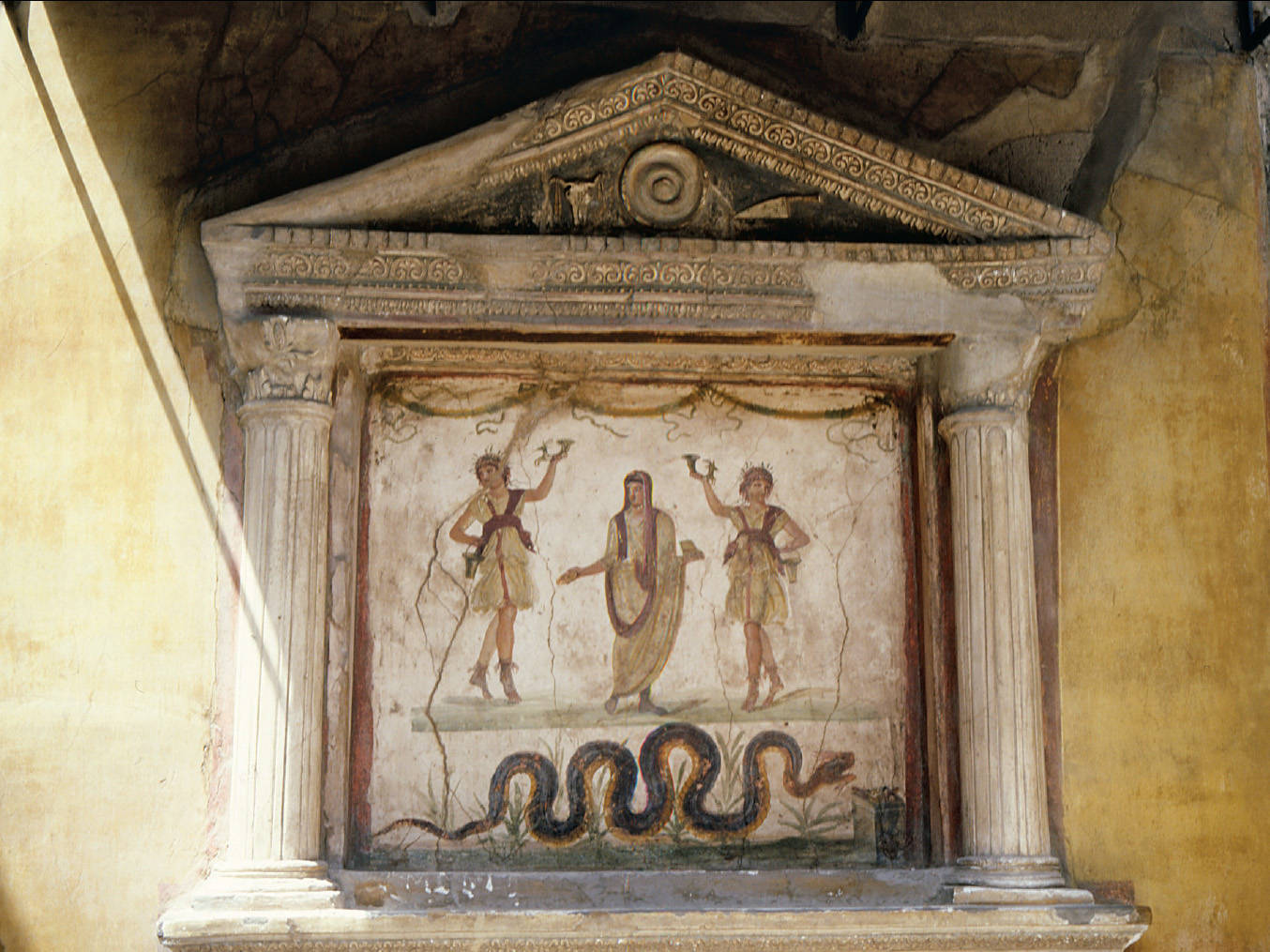Visual Source 5.4: A Domestic Shrine
The excavated ruins of Pompeii have much to tell us about the religious as well as the social life of the Roman world in the first century C.E., before Christianity had spread widely. Based on ritual observance rather than doctrine or theology, Roman religious practice sought to obtain the favor of the gods as a way of promoting success, prosperity, and good fortune. A core expression of the diverse and eclectic world of Roman religion was the imperial cult. In Pompeii, a number of temples were dedicated to one or another of the deified emperors, employing together a large cadre of priests and priestesses. Linked to the imperial cult were temples devoted to the traditional Greco-Roman gods such as Apollo, Venus, and Jupiter.
Probably more important to ordinary people were their lararia (household shrines), often a niche in the wall that housed paintings or sculptures of lares (guardian spirits or deities believed to provide protection within the home). Families offered gifts of fruit, cakes, and wine to these spirits, and the lararia were the focal point for various sacrifices and rituals associated with birth, marriage, and death. Visual Source 5.4 shows one of these shrines, uncovered in the home of a well-to-do freedman (former slave) named Vetti. Protecting the family from external danger were two lares, standing on either side of the lararium and holding their drinking horns. In the center was the genius, the spirit of the male head of household. Dressed in a toga and offering a sacrifice, this spirit embodied the character of the man, especially his procreative powers, and so guaranteed many children for the household. The snake at the bottom represented still other benevolent guardian spirits of the family in a fashion very different from Christian symbolism of the snake.

Question
haGZWLuUWD/YrkixuF76JP+VZCneKExXTTUVHYLMD9aZuPobcn+dAS5WGV7B5tf5r9n9GMg3an2EBR5fDHRneRHXZFQo43ZUcY1bvn8F4cTa+HIcJ/z9qAnh655EPayQ8gLEJeSadqYPA5eyvQIkeT9rkwB5t6GmBCZ5q+0U9xuIyoIJa2ii8DLYUfY=Question
Vw4nnavCYZtIRYOewe0tc497aKcGzKwR0F0AjKIHmkFg3ig4EOM42ur4P0s48g8lmcBKl25r/wlskuWoldes7pWSR072BcjUK5OwLx5JD+xhXmOf+793/KIUjbs=